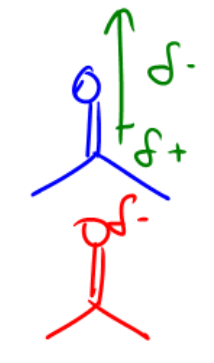Let's talk about intermolecular forces. So, intermolecular forces are forces that exist between molecules, not within the molecules, okay? If it's within a molecule, that's actually just called a chemical bond. Right? That would be like one atom attached to another atom. But with intermolecular forces, what I'm talking about is one molecule that is loosely associated with another molecule, meaning they just like to stick together a little bit. And it turns out that IMFs are what make molecules sticky. Okay? So, I know that it might sound weird that molecules would be sticky, but they actually are. It turns out that if these molecules did not stick together in some way, everything in the universe would be a gas. So, in order to have solids, and in order to have liquids, these molecules have to aggregate. They need to remain somewhat close to each other or they're just going to disperse. And that's what intermolecular forces do. Okay? They don't actually change the compound. The compound is affected by bonds. But the way the state of the matter is affected by intermolecular forces. So, I just want to show you guys this really quick diagram. This shows you three different molecules that have about the same molecular weight. Okay? So theoretically, if they have the same molecular weight, you would think that the overall type of substance would be similar, but actually it turns out to be very different.
So here we have a 3 carbon atom. Here we have a 2, I said atom, I meant molecule, sorry. Here we have a 2 carbon molecule with 1 oxygen. And here I also have a 2 carbon molecule with 1 oxygen. Alright? So, these are very similar looking molecules and they are very similar shapes yet their boiling points are vastly different. So, if you look at propane, propane is like a propane gas. Why do we keep it in a gas tank? Because it's gas. There's no way that you could just put propane in a bowl or in a cup. It would immediately turn into gas, okay? And then we have dimethyl ether, which just by adding one oxygen in that location, we've increased the boiling point a little bit. Okay. And remember, ether is one of those reagents that you're going to use a lot in the lab. Remember that it's very reactive. One of the reasons is because it turns into a gas very easily, so it's very volatile, okay? And then the last one here is ethanol. I've brought up ethanol before. You guys are very familiar with it. That's like vodka, alright? If your vodka was a gas, it probably wouldn't be as easy to consume, right? But it turns out that ethanol doesn't boil until Tbp=173 °C. That's crazy. Look how much different this boiling point is from this one. Okay? What's the difference? Why is it such a much higher boiling point? Why does ethanol exist as a liquid at room temperature whereas propane and dimethyl ether are going to exist as a gas? And the reason has to do with intermolecular forces.
So, whenever you get questions about boiling points or melting points, which are the ways that professors like to ask these questions, it always has to do with the strength of IMFs between molecules. So, if a professor ever asks you, list the following molecules in order of increasing boiling point or something like that, you know that they're talking about IMFs.










